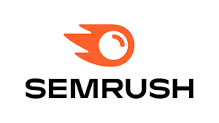Software Feature
Advertisement Analytics

Advertisement analytics in software refers to collecting, analyzing, and interpreting data related to advertising campaigns and their performance. It involves using specialized software tools and platforms to gather data from various advertising channels and extracting valuable insights to optimize advertising strategies and achieve better results.
Here are some key aspects of advertisement analytics in software:
- Data Collection: Advertising analytics software collects data from multiple sources, such as ad networks, social media platforms, search engines, websites, and mobile apps. This data includes information about impressions, clicks, conversions, engagement metrics, audience demographics, and more.
- Tracking and Attribution: The software employs tracking mechanisms like cookies, pixels, and unique identifiers to monitor user behavior across different platforms and devices. This enables the attribution of advertising activities to specific user actions, helping determine the effectiveness of each campaign.
- Performance Measurement: Advertisement analytics software measures various key performance indicators (KPIs) to evaluate the success of advertising efforts. Common KPIs include click-through rates (CTR), conversion rates, cost per acquisition (CPA), return on ad spend (ROAS), and customer lifetime value (CLV).
- A/B Testing: Software tools facilitate a/b testing, where different versions of an advertisement or landing page are compared to identify the most effective elements. This helps advertisers optimize their creative content, messaging, and targeting strategies to improve campaign performance.
- Campaign Optimization: By analyzing data, advertisement analytics software identifies patterns, trends, and insights about the target audience, ad placements, and messaging. Advertisers can use this information to optimize their campaigns in real-time, adjusting targeting parameters, budget allocation, and creative elements to maximize their impact.
- Audience Segmentation: Software platforms enable the segmentation of the target audience based on demographics, behavior, interests, and other relevant factors. This allows advertisers to tailor their messages and target specific segments with personalized and more effective advertisements.
- Reporting and Visualization: Advertisement analytics software generates comprehensive reports and visualizations that present key metrics and insights in a clear and actionable format. Advertisers can monitor their campaigns’ performance, identify improvement areas, and make data-driven decisions.
- Integration with Other Systems: Advanced advertisement analytics software often integrates with other marketing and customer relationship management (CRM) systems. This enables a holistic view of the customer journey and allows for seamless data transfer between platforms.
By leveraging advertisement analytics software, advertisers can gain a deeper understanding of their target audience, measure the impact of their campaigns, and optimize their advertising strategies to achieve better results, ultimately maximizing return on investment (ROI).
Find Advertisement Analytics Solutions Here
Search below to find a Advertisement Analytics solution that fits your digital experience needs.

